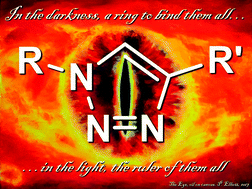An unexpected journey from highly tunable phosphorescence to novel photochemistry of 1,2,3-triazole-based complexes
Abstract
The photophysical properties of transition metal complexes have long attracted interest in the literature with significant research activity during the past two to three decades due to the potential exploitation of these materials in solar energy conversion, light-emitting technology, luminescence biological imaging and photodynamic therapeutic applications to name but a few. Since the advent of the facile preparation of 1,2,3-triazole-based compounds through copper(I)-catalysed cycloaddition, ligands based on this heterocycle have received widespread attention in coordination chemistry. Inevitably, their ability to be used as pyridine-like analogues has resulted in significant attention on the photophysical properties of their resultant complexes. There are, however, two sides to this tale; on the one hand, routes to 1,2,3-triazoles have enabled the realisation of highly tunable and efficient phosphors and photosensitisers. On the other hand, 1,2,3-triazole-based complexes have allowed highly novel photochemical processes to be explored offering insights into hitherto unappreciated excited state dynamics. This Perspective review covers the developments of photophysically active triazole-based complexes over the last decade, highlighting some of the key discoveries from our own laboratory as well as seminal contributions from other groups who are active in the area. We also identify possible new avenues for investigation and exploitation stemming from the work so far.

- This article is part of the themed collection: 2017 Frontier and Perspective articles


 Please wait while we load your content...
Please wait while we load your content...